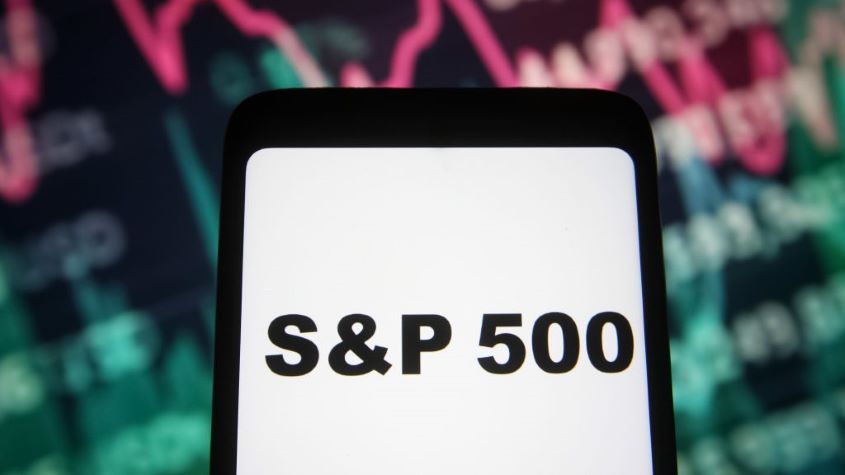S&P 500 index
The S&P 500 index is one of the most widely tracked stock market indices in the world. Here’s a rundown of the index and why it’s so important


The S&P 500 index is one of the most important financial indices in the world. It is widely regarded as being the best single gauge of large-cap US equity performance, and a staggering $15.6 trillion is indexed or benchmarked to the index. To put that figure into perspective, UK GDP is only around $3.1 trillion.
First created in 1975, the S&P 500 today includes 500 leading companies listed in the US. It covers approximately 80% of available market capitalization across US equity markets, which is why it is so widely tracked and followed.
S&P Dow Jones Indices, a subsidiary of S&P Global, Inc, determines which companies get added to the index.
MoneyWeek
Subscribe to MoneyWeek today and get your first six magazine issues absolutely FREE

Sign up to Money Morning
Don't miss the latest investment and personal finances news, market analysis, plus money-saving tips with our free twice-daily newsletter
Don't miss the latest investment and personal finances news, market analysis, plus money-saving tips with our free twice-daily newsletter
The index is what is known as a market-capitalization-weighted stock market index. That means each company is weighted in the index according to its size. For example, a company with a $1 trillion market capitalization will have a more significant impact on the index's daily performance than one with a $500 billion market capitalization.
To be included, a company needs to have a market capitalization of at least $12.7 billion, be highly liquid (easily tradable), profitable in its most recent quarter's earnings and must have achieved positive earnings over the past four quarters.
S&P futures
As the S&P 500 is an index, investors can't really buy it directly. Investors can track the index through a fund, such as the SPDR S&P 500 ETF trust (more on that later), which replicates the performance of the index by acquiring the underlying securities.
Another option is to acquire S&P 500 futures. These are a type of derivative contract, providing buyers with an investment price based on the expectation of the S&P 500's future value.
These so-called E-mini contracts can be traded through the Chicago Mercantile Exchange and, unlike stocks listed in the S&P 500, can be traded at all hours of the day.
However, it is important to remember that S&P 500 futures are derivative instruments and do not represent any direct interest in the underlying securities.
Stocks in the S&P 500
Overall, there are actually 503 stocks in the S&P 500. This is because three of the 500 listed companies, or ‘constituents’, have different share classes, which have to be included in the index.
Of the 503 stocks in the S&P 500, the largest company has a market capitalization of $2.35 billion. That title falls to the tech giant Apple.
The second and third largest stocks in the S&P 500 are Microsoft and Amazon.com, respectively. They are followed by Nividia Corp, Tesla, Berkshire Hathaway and two classes of shares in Google's parent company Alphabet.
The largest constituent, Apple, has a 6.6% weighting in the index. That means Apple has by far the largest impact on the index on a day-to-day basis. As such, if Apple does well on any trading day t it's likely the S&P 500 will do so as well.
The top 10 stocks in the S&P 500 have a weighting of 25.6% in the index.
S&P 500 index funds
An index fund is a type of mutual fund or exchange traded fund (ETF) with a portfolio constructed to match the components of a financial market index.
S&P 500 index funds are incredibly widespread and contain a vast volume of assets because this is one of the most crucial stock indices in the world. As noted above, index funds are one of the only ways investors can own the S&P 500.
Investors could attempt to build their own index fund and mimic the performance of the S&P 500, but doing so would be incredibly complicated, time-consuming and expensive.
That's why investors often choose S&P 500 index funds. These tend to be much cheaper, only charging a few basis points a year plus management fees, and are incredibly easy to buy and sell.
SPY stock
The largest S&P 500 tracker fund is SPY stock. The exchange traded fund was established in January 1993, is regarded as the first ETF to be listed, and remains one of the most actively traded ETFs in the world.
At the end of March, the ETF managed $362.41 billion of assets, with an expense ratio of 0.0945%.
That's one of the lowest expense ratios of any ETF on the market. When it first started life, the ETF managed just $6.5 million of assets.
As you would expect, the SPY stock holdings are almost identical to those of the S&P 500.
What's more, SPY stock is intended to be one-tenth of the S&P 500 index. So, if the index were trading at 3000, then one SPY stock should trade at $300.
More from MoneyWeek:
MoneyWeek portfolio of investment trusts
Get the latest financial news, insights and expert analysis from our award-winning MoneyWeek team, to help you understand what really matters when it comes to your finances.
Jacob is an entrepreneur, hedge-fund expert and the founder and CEO of ValueWalk.
What started as a hobby in 2011 morphed into a well-known financial media empire focusing in particular on simplifying the opaque world of the hedge fund.
Before devoting all his time to ValueWalk, Jacob worked as an equity analyst specialising in mid- and small-cap stocks. Jacob also worked in business development for hedge funds.
He lives with his wife and five children in New Jersey.
Jacob only invests in broad-based ETFs and mutual funds to avoid any conflict of interest that could arise from buying individual stocks.
-
 ‘Why I have ditched my Help to Buy ISA for cash savings and the stock market’
‘Why I have ditched my Help to Buy ISA for cash savings and the stock market’Without the 25% bonus, my Help to Buy ISA is effectively redundant, says MoneyWeek writer Sam Walker.
-
 Is your inheritance tax allowance cut if you sell to downsize or sell your home to pay for care?
Is your inheritance tax allowance cut if you sell to downsize or sell your home to pay for care?Downsizing relief is a little-known benefit that could save your loved ones tens of thousands of pounds in inheritance tax after you’ve died.
-
Index provider
Glossary Stockmarket indices such as the FTSE 100 play a huge role in investment. But where do they come from and who maintains them?
-
Currency risk
Glossary This is the type of risk that comes from the change in price of one currency against another...
-
Index fund
Glossary Index funds (also known as passive funds or "trackers") aim to track the performance of a particular index, such as the FTSE 100 or S&P 500.
-
Indices
Glossary There are indices for every sort of market, but retail investors are probably most familiar with those related to stock markets.
-
Low volatility
Glossary Low volatility – or “low vol” – investing means buying shares (or bonds) that tend to go up or down in price by less than the overall market (in other words, they’re less volatile).
-
Q ratio
Glossary The Q ratio, or Tobin's Q, can be a reliable measure of stockmarket value.
-
 Vix (volatility index)
Vix (volatility index)Glossary The Chicago Board Options Exchange (CBOE) Volatility index (Vix for short) reflects how volatile traders expect the market to be over the coming year.
